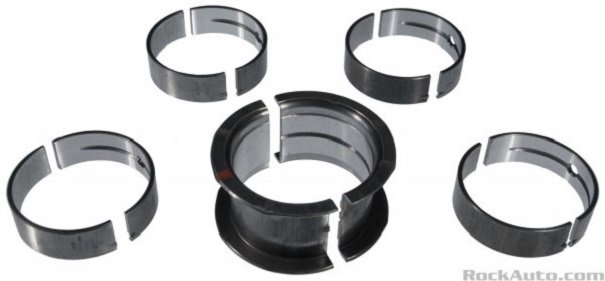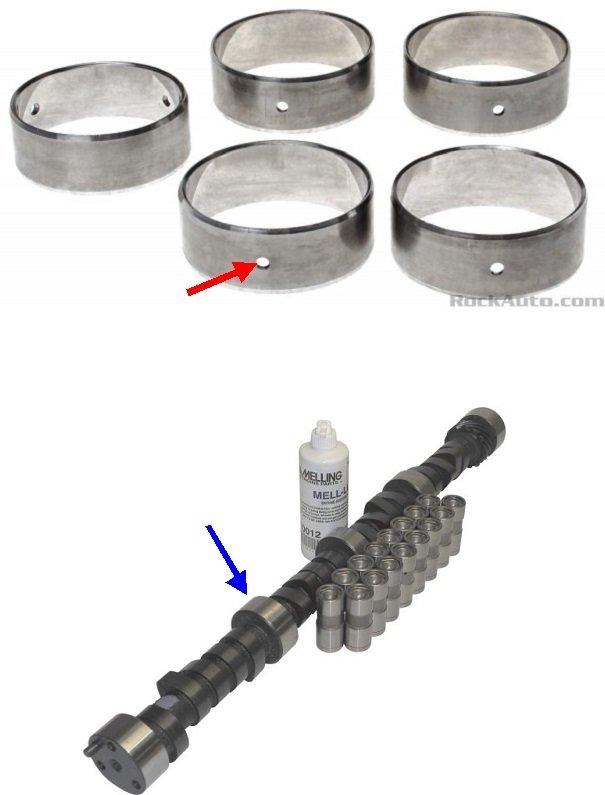The main bearings are for the crankshaft. That's the part that actually transmits rotational power to the transmission, then to the wheels. The pistons are connected to the crankshaft by the connecting rods. Those also ride on bearings. You'd be even more confused if you saw these bearings. We normally think of ball bearings, but in engines, they are three layers of flat metal, curved so two put together make a circle. This is a photo of the complete set of crankshaft bearings. I used photos of parts for the common 5.7L engine.
The connecting rod bearings look almost identical, but they're a little smaller. Every time you get a power pulse from a piston, it exerts really high force on these bearings. It's the oil under pressure between these bearings and the parts they support that keeps them isolated from each other so they slide smoothly without gouging each other. In addition, the top layer of metal is very soft. That is to allow a small speck of dirt that might have gotten through the filter to embed itself rather that scratch the metal parts.
Typically, the "clearance" is around .004 to .006". That's the space between the bearings and the rotating parts. It's roughly the the same as two or three sheets of paper. That is where the oil has to always be under pressure. It will leak out past the sides of the bearings, but that happens fairly slowly. It's once the bearings have worn down that the oil can run out faster, then it can't maintain its pressure. Once the parts contact each other, within a few seconds, the highly-polished surfaces will start to tear each other apart. Within minutes that can make the clearances so big that you start to hear the banging of the parts hitting each other. That's when major, expensive repairs are needed.
The camshaft you asked about is shown at the bottom of the second photo. The bearings are at the top. These are one-piece designs that are pressed into the engine, then the camshaft slides in through them. The blue arrow is pointing to one of the five "journals" that spin on these bearings. These bearings are smaller and have less force on them, so they will survive longer with low oil pressure. Also, it rotates half as fast as the crankshaft. The oil gets to all of these bearings through passages drilled in the engine. To oil the camshaft bearings, my red arrow is pointing to the small hole in one of them where the oil comes in. Here again, it oozes out the sides, but very slowly.
I should also mention low oil pressure can be caused by a worn oil pump, especially at high mileages. Regardless if it's worn bearings or worn pump, more oil volume is needed then to maintain pressure, and the pump runs faster when you increase engine speed. That can get the volume up high enough to keep pressure up. An oil pump replacement can be somewhat expensive too, but not nearly as much as rebuilding the engine.
If you have an interest, here's a link to a video that shows rebuilding a similar 5.3L engine. It will show you what is involved and the parts that normally get replaced:
https://youtu.be/NyX6FwLYDuc
Images (Click to make bigger)
Wednesday, December 16th, 2020 AT 2:50 PM




